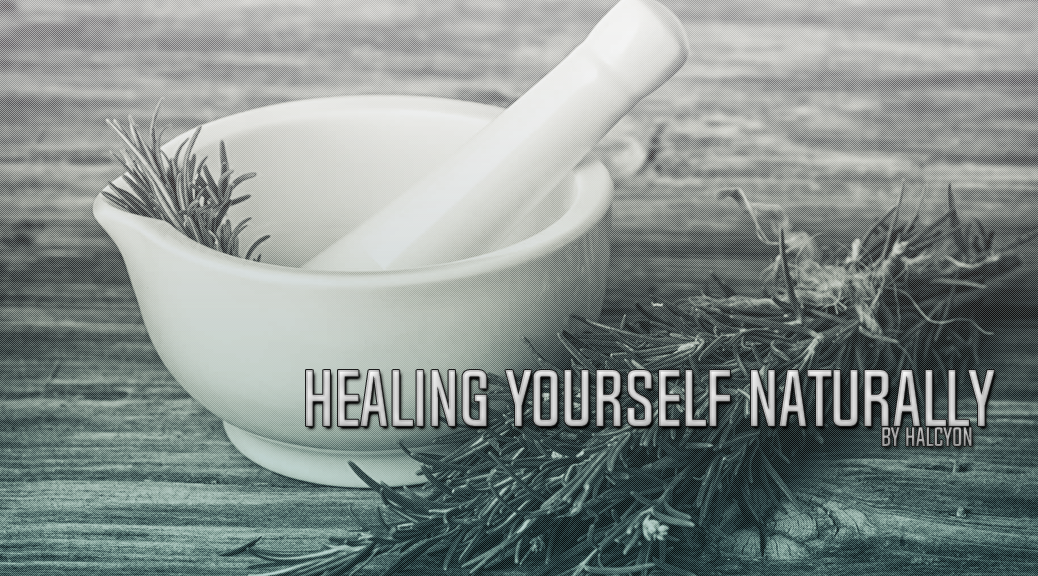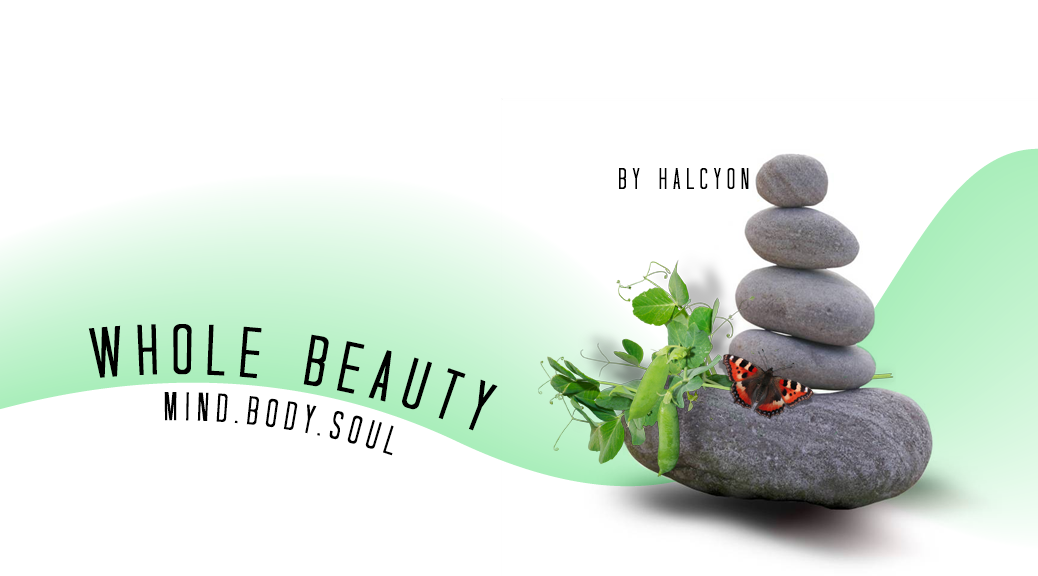By Halcyon
As with Whole Beauty, this column discusses practices that may not be appropriate for everyone. In addition, the advice given here is not intended to replace a visit to your doctor – much of the modern research into the efficacy of natural remedies is still in its early stages, and not all results seen in the laboratory translate to the real world. Remember that no matter what changes you’re considering, it’s always best to discuss them with your doctor or other health care provider, as he or she will be in the best position to address not only your personal needs and special concerns, but also the safety of alternative treatments, as herbs and supplements may interact both with medications and each other – however, if you’re interested in natural healing, we hope this article will provide you with some opening discussion points!
Healing Naturally: Poultices, Salves and Tinctures
Poultice:
* A poultice is nothing more than a direct way to apply herbs to the skin.
How to make a poultice:
* Herbs are usually crushed into a pulp or made into a paste that is spread directly onto the surface of the skin (up to an inch thick). The area is then wrapped in gauze or muslin, preventing the poultice from rubbing off.
There are different types of poultices:
* A warm or hot poultice will help increase circulation to the skin area.
* A cold poultice can help soothe a variety of inflammation.
* Skin-tingling ginger can be added to help increase circulation.
The Advantage:
* Poultices use fresh herbs, which have the greatest amount of the herb’s beneficial characteristics.
The Disadvantages:
* Poultices take time to make and time to do their thing, and are messier than a salve or cream.
* It’s best to use them at night so they can work while you sleep.
Some herbs you can use for poultices are:
* Yarrow
* Goldenrod
* Plantain
* Comfrey
* Calendula
General All-Purpose Wound Healing Poultice:
* Calendula: skin healing antimicrobial
* Comfrey Leaf: tissue healer and excellent to coat and seal broken skin
* Yarrow: Wonderful for healing, cracked skin, cuts and bruises. It can help staunch bleeding, too.
Salves:
* Medicinal herbs mixed with oil and thickened with beeswax.
* Salves create an easy vehicle by which the skin can absorb the healing properties of the ingredients.
Before you can make a salve, you need to make an oil infusion. There are quicker ways to do this, but I generally believe quick work can result in shoddy work, and you don’t want shoddy salve:
The Slow Way to Make an Oil Infusion
You’ll need:
* 2 cups of dried herb (loosely packed)
* Up to 2 cups of olive oil (see note)
* Sunny windowsill
* Pint-sized mason jar
Instructions:
Add the dried herb to a sterilized mason jar. Add olive oil until all the herb is covered. Use a skewer to stir and release air bubbles. Cap the jar tightly. Set the jar in a sunny window for 4 weeks, shaking gently every day or so.
When the time is up, separate the oil from the plant matter by straining it through a fine mesh strainer lined with cheesecloth. Be sure to squeeze the cheesecloth to release the last bit of oil.
* Be selective when choosing olive oil. Many brands cut their olive oil with canola oil which can make your infusion go rancid far sooner. The general shelf life for this type of infusion is twelve months.
Making the Salve
You’ll need:
* 1 1/4 cups infused oil (if you followed the instructions above, you should have about 1 1/4 cups oil)
* 1.5 oz (about 1/3 cup) beeswax pastilles
* Heavy-bottomed pot
* 10-20 drops of essential oil (optional)
* Whisk
* Glass measuring cup
* 5 4-ounce mason jars/jelly jars
* Spatula
Instructions:
* Add the beeswax to a heavy bottomed pot on the stove, and heat on low (you don’t want to burn it). Use the lowest temperature possible, as this will ensure that the beeswax retains some of its healing properties. Beeswax melts at 140 degrees.
* Once the beeswax melts, then whisk in the herbal oil.
* The cooler temperature of the oil will resolidify some of the beeswax, so continue whisking until the beeswax is completely melted and the two are mixed well.
* Add the essential oil, if you’re using it. Start by adding one or two drops at a time until you’ve reached your desired strength of fragrance.
* Resume whisking until all ingredients are completely melted and mixed together.
* Quickly pour the mixture into a glass measuring cup, then fill the jelly jars or tins. I reused a few sanitized, store-bought tins.
Note: The beeswax-oil mixture will solidify quickly in the measuring cup, sometimes before you’ve even finished filling the jars. If this happens, simply use the spatula to put the mixture back in the pot on the stove and melt it again.
* Let the jars cool for up to 24 hours, then cap them tightly and label.
Soothing Salve with Lemon Balm and Calendula:
* 1 1/4 cup calendula infused oil
* 1 1/4 cup lemon balm infused oil
* 3 oz beeswax pastilles (about 2/3 cup)
* Follow directions as outlined above. You’re doubling the recipe, so you’ll need approximately 10 jelly jars, rather than 5.
Calendula and lemon balm both have anti-bacterial properties. Together, they are also anti-inflammatory and anti-viral. This salve will help soothe insect bites and rashes, and help repair cuts and scrapes. In addition, lemon balm is effective at healing cold sores, while calendula is effective at soothing eczema.
Note: You may want to get a pot that you only use for making herbal preparations in case there’s any residue leftover, though I didn’t have any trouble washing my pot and utensils as I would my other dishes.
Tincture:
* A concentrated liquid extract of herbs, taken by the drop because it is so potent.
* Most tinctures are made by using alcohol as the extracant. Some prefer to use apple cider vinegar or vegetable glycerin (diluted with an equal amount of water) instead. These alternative won’t be as strong, but they will work.
Nettle Tincture
* Supports joint health and is accessible in many places across the United States.
Ingredients:
* Nettle, fresh or dried
* Brandy or vodka
Materials:
* Gloves
* Mason jar
* Muslin or cheese cloth
* Labels
* Amber Dosage Bottles
* Small funnel
* Large bowl
* Liquid measuring cup
The first step in this process is harvesting the nettles. Nettles are often found growing abundantly in the wild, but if you do decide to do some wild harvesting, I would suggest that you get a Peterson’s Field Guide or find an herbalist to help you identify the plant. If you prefer, you can purchase nettles in bulk on Mountain Rose Herbs. They are a great site for a variety of loose leaf herbs, teas, and other supplies.
If you are working with fresh nettles, it is recommended using gloves and wearing clothing to cover your skin to avoid a sting that may itch and tingle for a few hours. Chop the nettles as small as possible – the more herb chopped, the more surface area covered during the maceration (or extraction) process.
Fill your Mason jar about 1/4 full of freshly chopped herb, and cover all the way to the top with alcohol. If using dried nettles, fill jar halfway instead, then cover as before with alcohol.
Put the cap on the jar, sit it upright, and label it. Here’s a suggestion:
1. What kind of alcohol you used, and the percent of alcohol by volume.
2. Whether you used fresh or dried herb.
3. The common name and the binomial/scientific name of the plant used (nettle’s scientific name is Urtica dioica).
4. The date you made the tincture.
Let the mixture macerate. Shake the jar every day and store it in a cool dark cabinet. Make sure the herbs stay covered with alcohol – add more if needed. This is a great time to put good energy into your herbal creation and visualize all the ways it’s going to help you once it’s finally ready.
After 4-6 weeks have passed, you can then press out your tincture. Don’t worry too much about the time. Some folks wait as little as three weeks and some wait much longer.
To start the pressing process, unscrew your Mason jar, put your muslin or cheese cloth over the top, and flip the jar over above a large bowl to drain the liquid while separating the herb. Once all the liquid has gone into the bowl, you can then use both hands to squeeze any remaining liquid out of the herb.
Lastly, make a new label that replicates the first one for each dosage bottle filled. Store in a cool dark place and enjoy! It is suggested taking one-half to one teaspoon of nettle tincture two to three times a day when you feel like you need some joint support or an herbal tonic.


